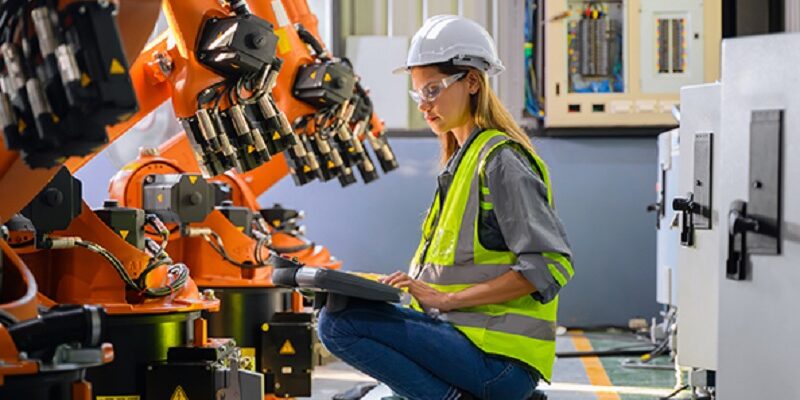As we approach 2025, the manufacturing industry is poised for continued transformation driven by technological advancements, evolving consumer demands, and a heightened focus on sustainability. Companies must adapt to these changes to remain competitive, efficient, and relevant in the ever-evolving market. This article outlines the best practices that manufacturers should adopt in 2025 to stay ahead of the curve.
1. Embracing Smart Manufacturing
Smart manufacturing integrates advanced technologies such as the Internet of Things (IoT), artificial intelligence (AI), machine learning, and automation to optimize production processes. The use of connected devices enables manufacturers to gather real-time data from the factory floor, offering invaluable insights into machinery performance, inventory levels, and supply chain activities. By embracing smart manufacturing, companies can:
- Enhance Operational Efficiency: With IoT sensors and AI-powered analytics, manufacturers can predict equipment failures before they occur, reducing downtime and maintenance costs. Automated systems can adjust production schedules based on demand fluctuations, ensuring optimal resource utilization.
- Improve Quality Control: AI systems can monitor product quality throughout the manufacturing process, identifying defects or deviations in real-time. This reduces the need for post-production inspections and ensures that only the highest-quality products reach the market.
As manufacturers continue to implement smart technologies, they will experience increased productivity, reduced operational costs, and improved product quality.
2. Adopting Sustainable Practices
Sustainability is becoming an essential focus in the manufacturing sector as businesses strive to minimize their environmental impact and meet consumer expectations for ethical production. In 2025, manufacturers will increasingly be expected to adopt sustainable practices that reduce waste, conserve energy, and promote responsible sourcing. Some strategies include:
- Energy-Efficient Manufacturing: Manufacturers should invest in energy-efficient machinery and renewable energy sources such as solar or wind power. By optimizing energy consumption, companies can reduce their carbon footprint and lower operating costs.
- Circular Economy Practices: The concept of a circular economy is gaining traction in manufacturing. Companies should focus on designing products for longevity, recyclability, and reusability. This approach not only reduces waste but also opens up new revenue streams through the resale or repurposing of materials.
- Ethical Sourcing: Transparency in supply chains is critical. Manufacturers must ensure that the raw materials they use are ethically sourced, meeting environmental and social responsibility standards. Blockchain technology can play a key role in tracking the origins of materials, ensuring that they come from sustainable sources.
By incorporating sustainability into their business models, manufacturers can reduce their environmental footprint, enhance their brand reputation, and comply with increasingly stringent regulations.
3. Leveraging Advanced Robotics and Automation
Automation and robotics have already begun transforming manufacturing processes, and by 2025, these technologies will be even more advanced and widely adopted. Robotic systems can perform repetitive tasks with precision, speed, and accuracy, freeing human workers to focus on higher-value tasks that require creativity and problem-solving skills.
- Collaborative Robots (Cobots): Unlike traditional robots, cobots are designed to work alongside humans. These robots can assist with tasks such as assembly, packaging, and inspection, improving both efficiency and safety on the factory floor.
- Automation of Complex Tasks: Automation will go beyond simple repetitive tasks to include more complex processes. For instance, AI-driven robots will be able to handle intricate assembly operations, reducing the margin for error and improving product consistency.
Investing in advanced robotics and automation will help manufacturers reduce labor costs, increase production rates, and enhance workplace safety.
4. Optimizing Supply Chain Management with AI and Blockchain
In 2025, the global supply chain will continue to be a critical area for manufacturing companies. The increasing complexity of global supply networks and the need for speed and accuracy will drive the integration of advanced technologies into supply chain management.
- AI for Predictive Analytics: Artificial intelligence can help manufacturers forecast demand more accurately, identify supply chain disruptions, and optimize inventory management. By analyzing historical data and market trends, AI can predict demand spikes or shortages, enabling manufacturers to adjust production schedules accordingly.
- Blockchain for Transparency: Blockchain technology can be used to create transparent, secure, and immutable records of transactions across the supply chain. By implementing blockchain, manufacturers can ensure that all parties involved in the supply chain—from raw material suppliers to end consumers—have access to accurate, real-time data on product provenance and movement.
By leveraging AI and blockchain, manufacturers can achieve greater efficiency, transparency, and resilience in their supply chains, reducing the risk of disruptions and improving their ability to respond to changing market conditions.
5. Fostering a Skilled Workforce Through Continuous Learning
As automation and advanced technologies become more prevalent, the need for a skilled workforce will only increase. Manufacturers must prioritize employee training and development to ensure that their teams are equipped with the necessary skills to thrive in a technologically advanced environment.
- Investing in Upskilling: Companies should invest in continuous learning programs to help employees adapt to new technologies. Offering training in areas such as robotics programming, data analysis, and AI implementation will enable workers to take on more advanced roles within the organization.
- Promoting Collaboration Between Humans and Machines: As automation and robotics continue to evolve, manufacturers will need to foster an environment where human workers can collaborate effectively with machines. By encouraging employees to work alongside robots and AI systems, manufacturers can maximize the benefits of these technologies while ensuring that workers continue to add value.
By focusing on skill development and providing opportunities for growth, manufacturers can ensure that their workforce remains agile, adaptable, and capable of leveraging new technologies to drive success.
6. Integrating 3D Printing for Customization and Flexibility
3D printing, also known as additive manufacturing, is transforming the way products are designed and produced. By 2025, this technology will be widely used in manufacturing, allowing companies to quickly and cost-effectively produce custom parts, prototypes, and even finished products.
- Rapid Prototyping: 3D printing allows manufacturers to produce prototypes quickly, reducing the time it takes to test and refine new product designs. This speeds up the product development process and enables companies to bring innovative products to market faster.
- Customization and On-Demand Production: With 3D printing, manufacturers can offer highly customized products without the need for expensive molds or tooling. This opens up new opportunities for on-demand production, allowing businesses to respond more quickly to changing customer preferences.
By incorporating 3D printing into their operations, manufacturers can increase their flexibility, reduce lead times, and offer a wider range of customized products.
7. Emphasizing Data-Driven Decision Making
Data-driven decision-making will continue to be a hallmark of successful manufacturing operations in 2025. As manufacturers collect more data through IoT devices, AI systems, and other digital tools, they must leverage this information to make informed decisions that improve performance and drive growth.
- Real-Time Analytics: Manufacturers should implement systems that provide real-time analytics to monitor production efficiency, machine performance, and supply chain activities. This enables managers to make data-backed decisions quickly, improving the agility and responsiveness of the business.
- Predictive Maintenance: Data from connected devices can be used to predict when machinery is likely to fail, allowing manufacturers to perform preventative maintenance before issues arise. This reduces downtime, extends the lifespan of equipment, and minimizes repair costs.
By using data to inform decisions, manufacturers can improve operational performance, reduce costs, and enhance their competitiveness in the marketplace.
8. Strengthening Cybersecurity Measures
As manufacturing becomes increasingly digitized, the need for robust cybersecurity measures will intensify. Cyberattacks pose a significant threat to manufacturers, as they can disrupt production, compromise sensitive data, and damage a company’s reputation.
- Securing Digital Infrastructure: Manufacturers should invest in strong cybersecurity systems to protect their networks, devices, and data. This includes encryption, firewalls, and secure authentication protocols to prevent unauthorized access.
- Employee Awareness: Employees must be trained on cybersecurity best practices, such as recognizing phishing attempts and safeguarding sensitive information. This creates a culture of security within the organization and reduces the risk of human error.
By prioritizing cybersecurity, manufacturers can safeguard their operations, protect customer data, and maintain the integrity of their digital infrastructure.
9. Adopting Agile Manufacturing Practices
Agility in manufacturing will be increasingly important as consumer demands become more unpredictable and supply chains become more complex. Manufacturers must adopt agile practices that allow them to quickly adapt to changes in market conditions, customer preferences, and production requirements.
- Flexible Production Lines: Manufacturers should design flexible production lines that can quickly switch between different products or production volumes. This allows them to respond quickly to shifts in consumer demand and reduce lead times.
- Cross-Functional Collaboration: Agile manufacturing requires close collaboration between different departments, including design, production, and logistics. By fostering collaboration, manufacturers can ensure that all teams are aligned and able to make decisions quickly.
Agile manufacturing practices will enable companies to stay competitive in a rapidly changing market, improving their ability to meet customer demands and capitalize on emerging opportunities.
10. Focusing on Innovation and R&D
Innovation will continue to be a driving force in the manufacturing industry. Companies must prioritize research and development (R&D) to stay ahead of technological trends and create cutting-edge products.
- Collaborating with Startups and Universities: Manufacturers should seek partnerships with startups, universities, and research institutions to foster innovation. These collaborations can provide access to new technologies, research findings, and innovative solutions.
- Investing in New Technologies: Manufacturers should be proactive in adopting new technologies, such as AI, blockchain, and robotics, to maintain a competitive edge. This includes investing in R&D efforts to explore how these technologies can improve operations, enhance product quality, and create new business opportunities.
By focusing on innovation and R&D, manufacturers can develop new products, improve existing processes, and maintain their leadership in the industry.
Final Thoughts
The manufacturing landscape is evolving rapidly, and businesses must adapt to these changes to remain competitive. By embracing smart manufacturing, sustainability, automation, AI, and other emerging technologies, manufacturers can optimize their operations, reduce costs, and meet customer expectations. The companies that succeed in 2025 will be those that prioritize innovation, data-driven decision-making, and collaboration across all levels of their organization.













Comments